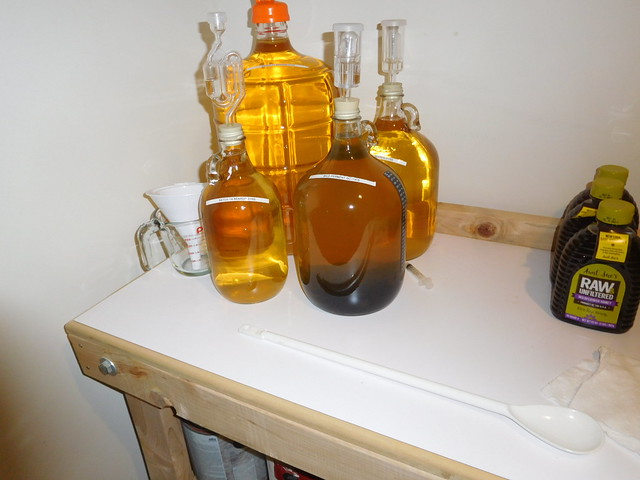Chris Walker
Chr15
- Joined
- Mar 23, 2018
- Messages
- 50
- Reaction score
- 22
My wife does not drink beer, so in order to justify some of recent hobby expenses I thought I would try a small batch of cider which she does like.
I used store bought fresh (pasteurized) sweet apple cider topped up with a little of canned "not from concentrate" juice, 1 cup strong English tea for tannin, yeast nutrient and pectin enzyme. (OG 1.042) fermented with lalvin EC-1118 yeast at 17deg.C
The fermentation started almost immediately and was vigorous for approx 1 week. It is now 10 days since pitching and everything looks to have stopped (or at least slowed to almost nothing.) It is very clear...see picture.
Being new to this I have read numerous threads but still not 100% sure on how to proceed from here.
I think I need to rack to secondary. However, 1st question is I have some head space in the current 1 Gallon growler and there is about an inch or so sediment. If I transfer to a fresh growler will I have too much head space for secondary? - I don't really have anything else of appropriate size.
I want to end up on the slightly dry side of medium and carbonated but am very nervous about the "bottle bomb" threat.
With beer I have always bottle carbonated with drops and had no issues but I get the feeling cider is perhaps more volatile?
I am considering moving to a kegs and as I only normally brew 2.5 to 3 Gal batches I would get 2.5G corny kegs - would that be OK for a 1 gallon batch of cider?
I am also confused as to how I would sweeten? from what I have read it seems necessary to stop the ferment with sulphites (so all the sugar is not fermented out) but then how will it bottle carbonate? - presumably this is easier in a keg as can stop the ferment and then carbonate with CO2 tank?
Any suggestions would be gratefully received.
I used store bought fresh (pasteurized) sweet apple cider topped up with a little of canned "not from concentrate" juice, 1 cup strong English tea for tannin, yeast nutrient and pectin enzyme. (OG 1.042) fermented with lalvin EC-1118 yeast at 17deg.C
The fermentation started almost immediately and was vigorous for approx 1 week. It is now 10 days since pitching and everything looks to have stopped (or at least slowed to almost nothing.) It is very clear...see picture.
Being new to this I have read numerous threads but still not 100% sure on how to proceed from here.
I think I need to rack to secondary. However, 1st question is I have some head space in the current 1 Gallon growler and there is about an inch or so sediment. If I transfer to a fresh growler will I have too much head space for secondary? - I don't really have anything else of appropriate size.
I want to end up on the slightly dry side of medium and carbonated but am very nervous about the "bottle bomb" threat.
With beer I have always bottle carbonated with drops and had no issues but I get the feeling cider is perhaps more volatile?
I am considering moving to a kegs and as I only normally brew 2.5 to 3 Gal batches I would get 2.5G corny kegs - would that be OK for a 1 gallon batch of cider?
I am also confused as to how I would sweeten? from what I have read it seems necessary to stop the ferment with sulphites (so all the sugar is not fermented out) but then how will it bottle carbonate? - presumably this is easier in a keg as can stop the ferment and then carbonate with CO2 tank?
Any suggestions would be gratefully received.


















![Craft A Brew - Safale S-04 Dry Yeast - Fermentis - English Ale Dry Yeast - For English and American Ales and Hard Apple Ciders - Ingredients for Home Brewing - Beer Making Supplies - [1 Pack]](https://m.media-amazon.com/images/I/41fVGNh6JfL._SL500_.jpg)






























